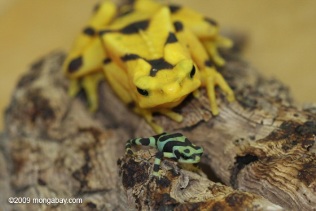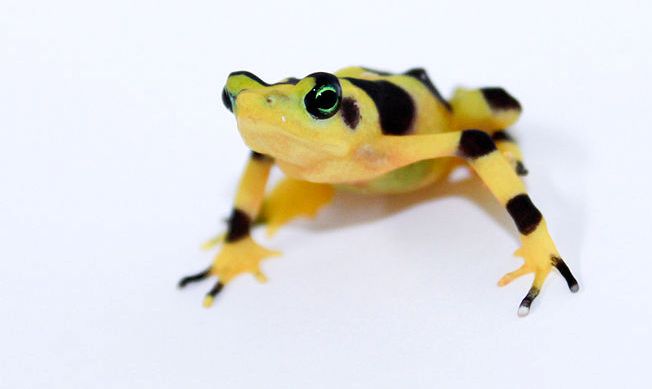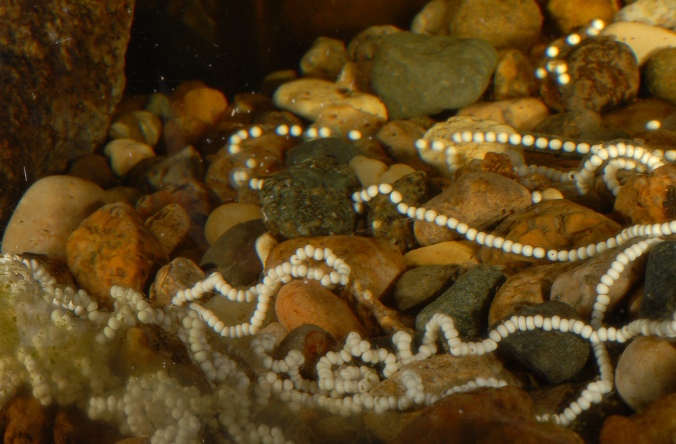Adaptation
The Panamanian Golden Frog possesses multiple important adaptations that provide it with a better chance of survival in the wild. Unfortunately, due to the chytrid fungus, these adaptations have proven to be ineffective seeing as though the population of Atelopus zeteki is listed as critically endangered. Also on that critically endangered list is Pongo albelii, commonly known as the Sumatran Orangutan - check it out!
In terms of general adaptations, the Panamanian Golden Frog displays bilateral symmetry which allows for cephalization (formation of head) and is cold-blooded meaning it must rely on the surroundings to regulate its own body temperature. The frog also has lungs within its body that it uses for respiration, but it supplements that respiration by breathing through its skin. Furthermore, it possesses feet with long toes (hind feet are webbed) for the purpose of gripping the substrate and climbing trees and other plants. One of the most interesting adaptations is the Panamanian Golden Frog's lack of eardrums. Because it is unable to hear, the frog must rely on its other senses to react to the environment. Despite this inability to hear, it can still detect when other frogs become vocal through the feeling of vibrations given that the surrounding environment is relatively quiet. The Panamanian Golden Frog commonly turns to hand signals (semaphoring) as an adaptation to its lack of hearing.
The
most conspicuous adaptation of the Panamanian Golden Frog is its
skin color. The vibrant yellow skin color of the adult frogs
is reflective of the frogs' toxicity
levels. This vibrant color is used to warn other organisms of
its toxicity and, thus, works as a defense mechanism in the wild.
When the Panamanian Golden Frog is in its juvenile life stage, it
displays cryptic coloring in the form of a green body with black
spots.
Because the juvenile frogs have not developed the
 toxin
yet, this cryptic coloring works as camouflage so predators are less
likely to see them. As the frogs mature, the green pigment in
their skin turns to yellow. It is believed that their skin
color is correlated to the toxicity level of their skin - brighter
yellow translates to stronger toxicity. Shown in the picture
below is a Panamanian Golden Frog that is not fully mature.
Looking closely, there is still some green pigment in the skin of
the frog indicating it is in an intermediate life stage.
toxin
yet, this cryptic coloring works as camouflage so predators are less
likely to see them. As the frogs mature, the green pigment in
their skin turns to yellow. It is believed that their skin
color is correlated to the toxicity level of their skin - brighter
yellow translates to stronger toxicity. Shown in the picture
below is a Panamanian Golden Frog that is not fully mature.
Looking closely, there is still some green pigment in the skin of
the frog indicating it is in an intermediate life stage.
Courtesy of
www.mongabay.com
Photo taken by Rhett Butler
When it comes to reproduction, the Panamanian Golden Frog has an important adaptation to ensure the survival of the eggs. The female will lay a large amount of eggs, typically from 200 to 600, to make sure the next generation will be successful. This process follows a Type III survivorship curve. Many eggs are laid because it is inevitable that some will not survive.
Note: Unless labeled, all images used under public permission.
To continue to the Panamanian Golden Frog's toxicology, click here.
Are you lost? Go back HOME.


